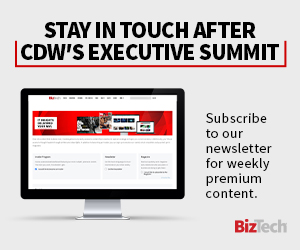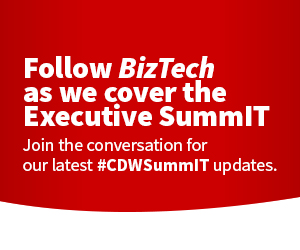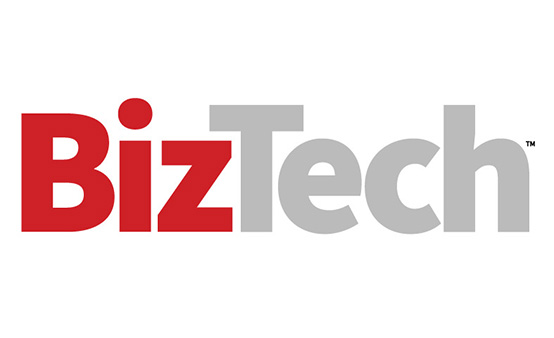Good Friction vs. Bad Friction: How To Handle Them
Waddell noted that friction exists in every organization across numerous areas. Some friction can be good, such as access controls that may require users to take a few seconds to authenticate their identities but that help to secure sensitive data, or change management processes that enable new ways of doing business.
By contrast, bad friction creates delays and stress without adding value. Users may experience bad friction in busywork that delivers little value to an organization, or in provisioning delays that slow down important projects.
“You want to automate good friction wherever possible,” Waddell said. “You want to eliminate bad friction.”
READ MORE: Can handheld technology reduce friction for shoppers?
How AI Can Reduce Friction To Open New Doors
AI is a powerful tool in helping organizations reduce friction, Waddell said, and it’s one CDW itself is exploring extensively. CDW has adopted AI broadly within its own operations, including issuing 10,000 Microsoft Copilot licenses to coworkers, as well as implementing seven new AI agents.
These agents can help organizations improve their efficiency in a variety of ways. Waddell recounted that on a recent airline flight, he used AI to help him finish a writing project much more quickly than he could have by himself. He deployed another agent to analyze data from multiple spreadsheets to glean important insights from them, and he utilized a research agent to evaluate how customers would be affected by a product launch.
“With that, in one plane ride, I was able to accomplish a massive amount of work that would have been impossible six months ago,” Waddell said.
DIG DEEPER: A CDW survey of over 900 decision-makers explores AI's impact on the IT landscape.
AI has a number of use cases that can reduce friction, including generative AI to help users complete tasks such as writing and creating video more quickly. Predictive AI can help organizations get ahead of problems, while perceptive AI can help them make sense of large quantities of video and sensor data. Embedded AI works to enable automation within other tools or services, and agentic AI can act autonomously on tasks.
Organizations are looking to implement AI in numerous ways, and they need to make sure their tools are running on the most effective infrastructure for each workload, Waddell explained. That may be on-premises or in various cloud environments ranging from hyperscalers to small, dedicated clouds. Establishing a data fabric that enables AI workloads to move seamlessly across different infrastructures is the next step in AI optimization.
EXPLORE: Securing identities with zero trust in the age of AI.
Focus on Removing Harmful Friction for Users
As organizations work to eliminate friction, they can explore new approaches in key areas. The use of platform engineering lessens friction in multiple ways, enabling organizations to reduce the time needed to bring new products and services to market. Further, it can help organizations take advantage of automation and standardization while also cutting operational overhead.
Establishing cyber resilience is another important way to remove friction. Organizations certainly want to avoid the massive friction of a data breach, but they also want to ensure that they can minimize the impact of a breach and enable faster incident response and recovery.
“AI threats will outpace our ability to detect them,” Waddell said. “As a result, resilience will matter more than prevention.”
Security is a critical consideration as workplaces continue to evolve and organizations look to build out spaces that enable the future of work. Users need tools that support seamless collaboration and help them work more productively, but organizations must make sure they remain secure.
“We need to think about this from an architectural and framework perspective and bring together security, applications and infrastructure to build a connected ecosystem,” Waddell said. “With the right plan, we give employees the right tools at the right time, in the right context, without unnecessary friction.”
Ultimately, the organizations that are able to reduce friction across the enterprise will give themselves a powerful competitive advantage.
Find BizTech’s full coverage of the event here, follow our live news coverage of the CDW Executive SummIT on the social platform X @BizTechMagazine and join the conversation using the hashtag #CDWExecutiveSummIT.













